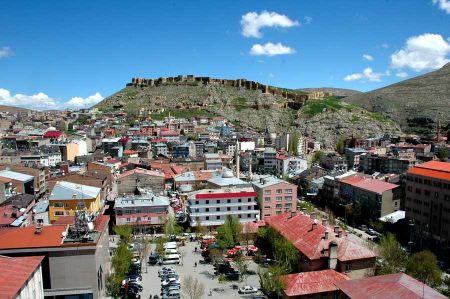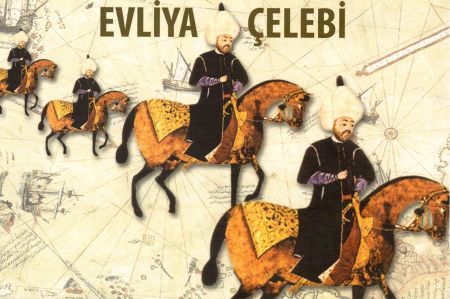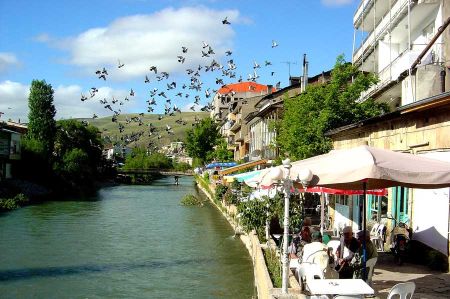Silkroad town of Bayburt on the Çoruh river
- Written by Portal Editor
The city of Bayburt in North-eastern Anatolia can look back to a long and extremely varied history. As one of the cities on the old trade route "Silk Road", Bayburt was a prominent hub in history and thus occupiers and conquerors abounded.
First the Urarteans, then the Armenians, the Persians, Roman Empire and the Seljuks were lords in the city, the name often changed with the change of rule. Bayburt has always been the site of armed groups or even garrison towns due to the fact that frequent attacks and changes of rule had taken place.
In 1364 the Emperor of Trapezunt (Trabzon) was able to defeat and drive out the Mongols who had penetrated to Bayburt. Around 100 years later, it was written in 1462, the Ottoman Sultan Mehmed II fought here against the Turkish Akkoyunlu tribe to prevent them from advancing further. During the invasion by the Russians in 1825, Bayburt was almost completely destroyed, but was rebuilt after the disputes ended.
 These few dates make it clear how varied history took place here. This can also be demonstrated at the Bayburt Kalesi castle fortress, which was repeatedly rebuilt high above the Çoruh river on the rocks within the city. Traces of human dwellings, shards and objects have been found that date back to the Iron Age. It is likely that the Urartians were the first to build a fortress here. This substructure was later often being used by both the Seljuks and the Ottomans to rebuild a fortress. Just recently and in support of the growing tourism, the castle wall was restored by the Office of Culture of the Republic of Turkey.
These few dates make it clear how varied history took place here. This can also be demonstrated at the Bayburt Kalesi castle fortress, which was repeatedly rebuilt high above the Çoruh river on the rocks within the city. Traces of human dwellings, shards and objects have been found that date back to the Iron Age. It is likely that the Urartians were the first to build a fortress here. This substructure was later often being used by both the Seljuks and the Ottomans to rebuild a fortress. Just recently and in support of the growing tourism, the castle wall was restored by the Office of Culture of the Republic of Turkey.
The traveller Evliya Çelebi once visited the city of Baybur
 Bent's bathhouses, the various mosques, the ruins of Ksanta and Varzahan and the Korgan Bridge are particularly worth visiting in the city. A special historical highlight is the stay of Marco Polo, who was in Bayburt on his trip to China and has written about the profitable silver mines in his travel reports. The well-known greats among the city's visitors include the Turkish traveller Evliya Çelebi, who spent a long time in Bayburt.
Bent's bathhouses, the various mosques, the ruins of Ksanta and Varzahan and the Korgan Bridge are particularly worth visiting in the city. A special historical highlight is the stay of Marco Polo, who was in Bayburt on his trip to China and has written about the profitable silver mines in his travel reports. The well-known greats among the city's visitors include the Turkish traveller Evliya Çelebi, who spent a long time in Bayburt.
Outstanding, however, are the stories that date back to the 12th century about Saint Dede Korkut, whose home and grave are said to be in Baybut. Dede Korkut came to Bayburt during his hikes from Central Asia and wrote his personal view of the events of the time in such a fabulous style that they are still one of the highlights of Turkish literary history. In honour of him, a big festival is celebrated once a year in Bayburt. Since 1999 UNESCO declared Dede Korkut Year, this festival has become increasingly important, and even abroad there are now commemorations and celebrations in honour of Dede Korkut.
Horse game Çirit - also called Cavgan
Horses always played a major and decisive role for the various Turkish tribes on the way from Central Asia to Anatolia, and quite a few considered them to be sacred animals. So it is not surprising that the old horse game Çirit, which is also called Cavgan, is still organized by some communities, including Bayburt, to commemorate the Turkic people.
Despite its 80,000 inhabitants, Bayburt has remained a quiet and tranquil place; even the associated province of the same name is said to be the province with the lowest population. The level of awareness among the mostly local tourists who want to visit the city and its sights on the Çoruh River is only slowly increasing.
Please read as well:
Lily of the Valley - something so beautiful be poisonous?
Amasya - birthplace of the historian Strabon
